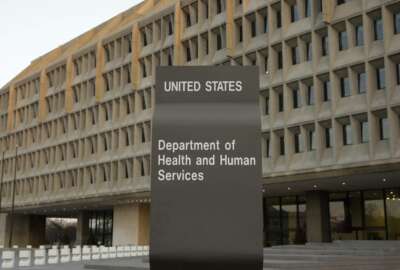

The Office of Personnel Management is getting up to speed with one of its newest duties — standing up a governmentwide marketplace for human resources IT...
The Office of Personnel Management is getting up to speed with one of its newest duties — standing up a governmentwide marketplace for human resources IT solutions.
Steve Krauss, a senior advisor at OPM for the HR Quality Services Management Office (HR QSMO), said the agency is taking steps to standardize human capital functions across agencies, and helping the federal government behave more like a single “enterprise customer” when it comes to buying HR solutions and services.
OPM spent much of 2022 getting a better understanding of the state of HR IT systems across the federal government.
The Office of Management and Budget shifted oversight of the HR QSMO to OPM last year, after OMB determined the agency was better suited to lead this marketplace than the General Services Administration, FedScoop reported in April 2022.
“There are opportunities to help the federal government speak with one voice and operate as more of an enterprise customer, if you will, with some of those enterprise suppliers. There are also, in many cases, opportunities where agencies would like to move from that sort of fragmented ecosystem, to something that is more of an end-to-end solution. And so we’re working with agencies on all of those things,” Krauss said on Dec. 8 at AGA’s 2022 Technology & Transformation Summit.
The Trump administration launched QSMOs in April 2019 in an effort to centralize mission support capabilities across the federal government. Other agencies oversee QSMOs for cybersecurity, financial management and grants management.
Krauss said all QSMOs, at their core, are focused on optimizing services and business processes.
“All of the services that agencies provide to their employees, or that the shared service providers provide to their agencies ride on technology platforms of one sort or another, and the human capital business domain is fairly complex and fragmented, compared to some of the other domains that are in the field. You’ve got core HR systems, you’ve got payroll systems, and there’s really five or six major chunks that each agency has as part of their architecture,” he said.
Krauss said the General Services Administration has developed a framework for the business and data standards that every QSMO should adhere to across their mission support domains.
To support GSA’s framework, OPM is developing adoption playbooks to help agencies implement the QSMO standards.
“If the standards are written properly and they’re easy to understand, agencies should be able to lift a lot of the information in those standards, and turn those directly into procurement requirements,” he said.
OPM spent about six months in 2022 going through an HR IT inventory and modernization roadmap with 24 CFO Act agencies, as well as a few additional agencies.
Krauss said there are lots of opportunities to help agencies help navigate the market of HR service providers.
“[We’ve] got a real inventory of what systems agencies were using to drive various parts of the human capital business model, as well as which service providers they were using to do that. We’ve got an idea of what their roadmap looks like, what they’re thinking of modernizing, what they’re happy with [and] what they’re not happy with,” he said.
Krauss said OPM, as a QSMO provider, is currently focused on providing consultative services to agencies.
“There are huge opportunities in terms of enabling agencies to do things better, more efficiently,” Krauss said.
OPM has spent the past few years developing a standards framework for the HR QSMO it leads. Krauss said the standards framework is “substantially complete,” and will be publicly released in January 2023.
Krauss said OPM is looking for industry feedback through the public release of the standards.
“That’s very important, because as government agencies, if we’re going to rely on our industry partners to provide services and goods that help us, modernize and build our human capital management capability, our industry partners need to understand those standards as well,” Krauss said. “There’s a growing sense of momentum for agencies to use those standards, and to agree to come together on those standards. And it’s our role to help them do that, and to create leverage from that.”
Krauss told Federal News Network after an AGA panel that the roadmap helps OPM a big-picture look at the state of federal HR IT systems and how agencies plan to modernize them.
Krauss said OPM, prior to the roadmap, thought a lot of agencies would probably move their HR IT systems to the cloud. However, he said many agencies using Oracle’s PeopleSoft HR management systems “are not looking to move anytime soon” to the cloud, because Oracle announced in April 2021 that it would continue to support PeopleSoft for at least another 10 years, through 2032.
Krauss said the roadmap findings mean OPM “may not push as hard to move everybody to the cloud immediately,” and focus on other ways to optimize agency HR workflows.
“A lot of agencies are kind of almost looking to stick with PeopleSoft or hunker down. As a result, one of the things that we noticed is that a number of agencies are looking to augment what they’re doing with PeopleSoft, through the use of things like low-code, no-code platforms, so they can continue modernizing their HR processes without having to do kind of a heart transplant, if you will, with [their] core HR [systems],” Krauss said.
Through the roadmap initiative, several agencies told OPM they’re looking for better options for performance management and time-and-attendance systems.
“It helped us to understand where to focus our efforts as a QSMO, if agencies are going to come to us and say, ‘I need to know what solutions you would recommend.’ We now know which areas agencies are most likely to come to ask us that question, and so we can focus our efforts there,” Krauss said.
Meanwhile, Krauss said OPM is taking steps to “connect the dots” between the parts of the agency that issue federal workforce policies, and the part of OPM running the HR QSMO and a federal marketplace of services and products.
“From a QSMO perspective, part of what we do is operate as that voice of the customer piece — helping OPM to understand what customer agencies need and are missing, and then we coordinate across offices within OPM to make sure that we can help agencies move out on those things as efficiently and effectively as possible,” Krauss said.
To help agencies looking to staff up through the $1 trillion infrastructure spending bill Congress passed last year, Krauss said OPM put together “SWAT teams” to consult with specific agencies to help them develop recruiting and hiring strategies.
Krauss said that SWAT team work included understanding agencies to hiring and workforce needs, and helping agencies better understand the hiring authorities available.
“A lot of what it takes to improve hiring in the federal government has to do with improving policy, and improving agencies’ understanding of how to make use of things like direct hiring authorities that are available to them,” Krauss said.
As part of this work, OPM has developed a community of practice for HR workflow automation. The community looks to maximize the automation of HR tasks through tools like robotic process automation and low-code platforms.
“To the extent that agencies can share these things, as opposed to having to invent that wheel all by themselves every time, you can get more for your money over the duration, through the sharing and collaboration that we’re that we’re seeing,” Krauss said.
To support the Biden administration’s focus on the future of work, OPM has also convened a human capital data analytics community of practice. Krauss said the community has nearly 300 participants across the federal government sharing dashboards and visualizations.
“The administration is very concerned about the future of work, employee engagement, employee attrition and retention. How does the way that we’ve in our workplace, in our work modes, affecting all these things, every agency is trying to figure this out on their own. But when we get together and share, we can accelerate the rate at which we understand that” Krauss said.
Krauss said OPM is also consulting with agencies and encouraging them to collaborate on shared solutions to IT modernization solutions. Many agencies, without consulting each other, have submitted similar or nearly identical IT modernization proposals to the Technology Modernization Fund, but with limited success.
“What we’re seeing, for instance, is that if a number of agencies are submitting duplicative proposals to the Technology Modernization Fund, they’re all getting evaluated by the same board, they see that they’re not going to give anybody money when everybody’s asking for the same projects. So if agencies want the TMF money, what we’re hearing is that they pretty much need to start thinking about working together,” Krauss said.
“Because we’re in an environment where agencies don’t have, as a rule, the funding that they need or that they would like to have, the best bet that we have — whether we go for TMF funding, or go to the Hill — is to be able to line up a set of agencies and say, ‘We’ve got a common set of requirements, we’ve got common needs. We think we can do it once for everybody. And by the way, once we get this done, we should be able to serve other agencies as well.’ That actually is a good pitch, quite frankly. It’s a good strategy, and so we’re working with agencies to put that together right now,” Krauss added.
Copyright © 2025 Federal News Network. All rights reserved. This website is not intended for users located within the European Economic Area.
Jory Heckman is a reporter at Federal News Network covering U.S. Postal Service, IRS, big data and technology issues.
Follow @jheckmanWFED


